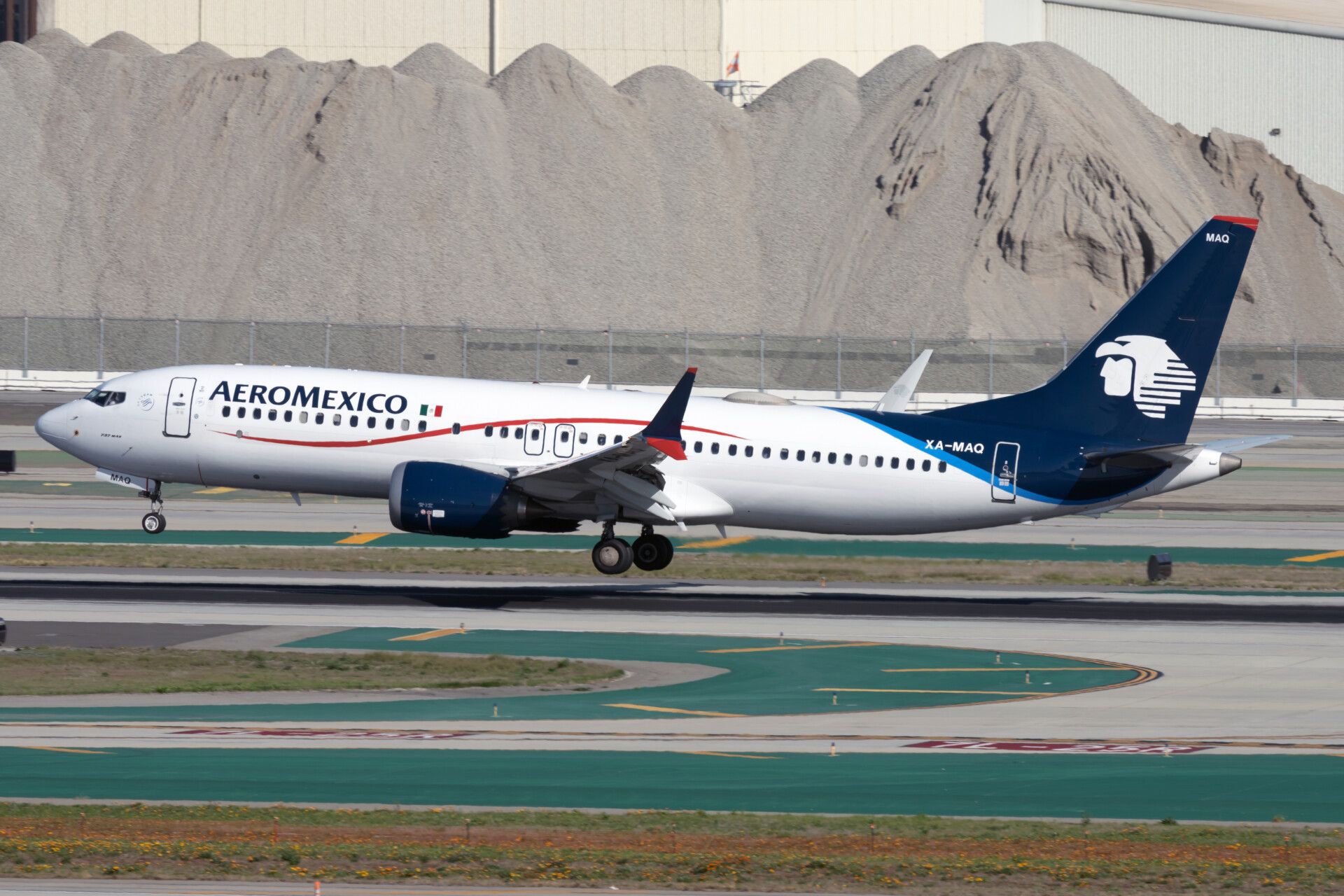Runway incursions continue to make the news as another incident has taken place - this time at Mexico City International Airport. Labeled as an 'operational error,' it appears that a Viva Aerobus A321 was mistakenly cleared to cross a runway in advance of an Aeromexico Boeing 737 beginning its takeoff roll. Spotting the conflict in time, ATC called on the Aeromexico flight to reject takeoff.
Incident details
On May 10th, an Aeromexico Boeing 737 MAX 8 was set to perform flight AM117 from Mexico City (MEX) to Ciudad Juarez (CJS). Around the same time, a Viva Aerobus Airbus A321-200 had touched down after a flight from Nuevo Laredo (NLD) and was presumably taxiing towards the terminal.
According to reporting by The Aviation Herald, the Viva Aerobus A321 (registered XA-VBU) had landed on runway 23L, vacated the runway via taxiway B4, and was holding short of runway 23R for several minutes. It's reported that ATC was issuing a series of instructions to various aircraft when the tower controller misspoke a callsign, which seemingly cleared the Viva Aerobus A321 to cross the runway. Complying with the erroneous clearance, the crew of the A321 commenced crossing the runway.
Shortly after, the Aeromexico 737 was cleared for takeoff. Hearing this on the radio, the crew of the A321 attempted to transmit a warning about their runway crossing over the radio. However, the transmission was partially blocked and not received. Thankfully, ATC became aware of the A321 on the runway and instructed the Aeromexico jet to reject takeoff. The crew of the 737 MAX 8 safely and successfully rejected their takeoff from runway 23R after reaching a speed of 80 knots over ground.
At the time, ATC had not realized their error and was under the impression that the Viva Aerobus jet had crossed the runway without clearance.
Discover more aviation news with Simple Flying.
4-hour delay departure after rejected takeoff
After rejecting takeoff, the Aeromexico 737 operating flight AM117 returned to the apron.
The aircraft, less than a year old, underwent a check and subsequently departed MEX at 19:41, some four hours after the rejected takeoff took place. The aircraft, originally scheduled to arrive at Ciudad Juarez at 18:02, ultimately arrived at 21:54.
Various sources differ in their definition of a high-speed versus a low-speed rejected takeoff. Some believe the threshold is 80 knots, where anything above this point is considered high-speed. For others, that speed is 100 knots. While V1 (point of no return) speed will depend on environmental conditions and aircraft loading, an aircraft like the 737 MAX 8 would have a V1 speed of around 150 knots.
While the Aeromexico 737 was below V1 speed, its rejected takeoff speed of 80 knots (nearly 150 km/h or 90 mph) would still see a tremendous amount of kinetic energy being absorbed by the aircraft's brakes. As a result, the aircraft's brakes would be fairly hot. As noted by the website Pilot Institute, the hotter brakes are, the less efficient they are. "If you need to stop again, you will find that the brakes will be far less efficient immediately following a high-speed stop...Allow sufficient time for brake cooling if you’ve been heavy on the brakes."
What do you think of this incident? Share your thoughts by leaving a comment!
Sources: Planespotters.net, FlightRadar24.com, The Aviation Herald, Pilot Institute




